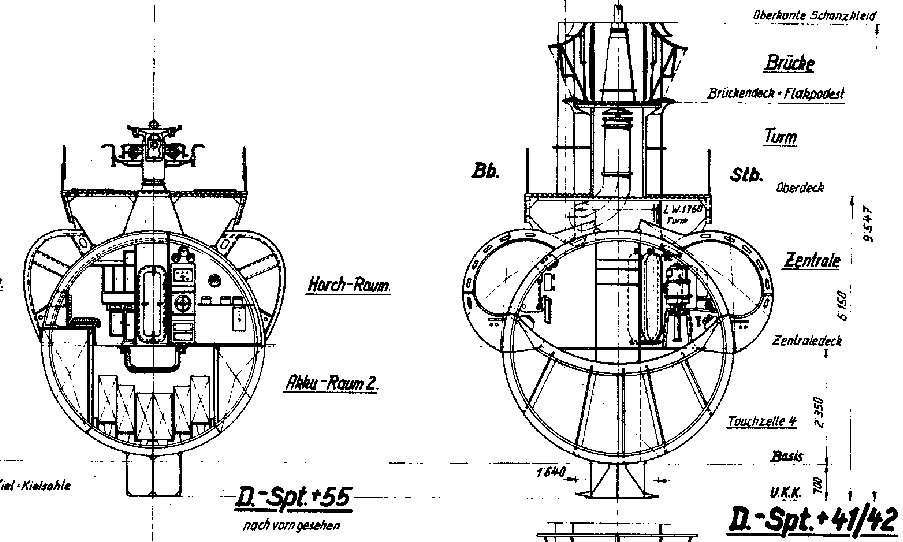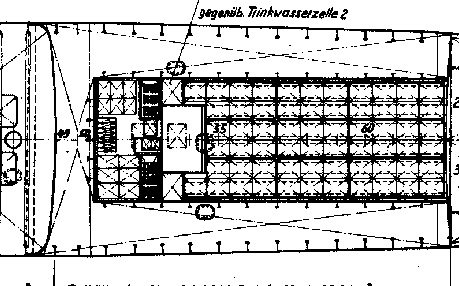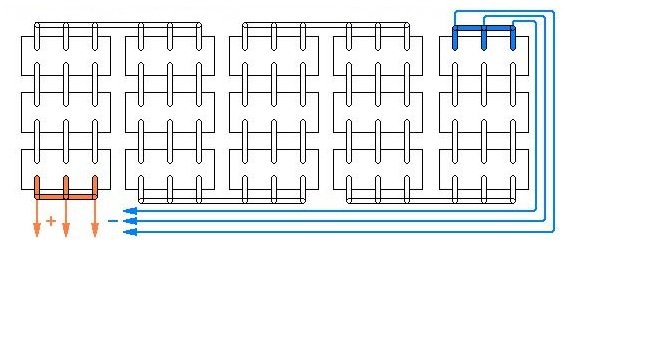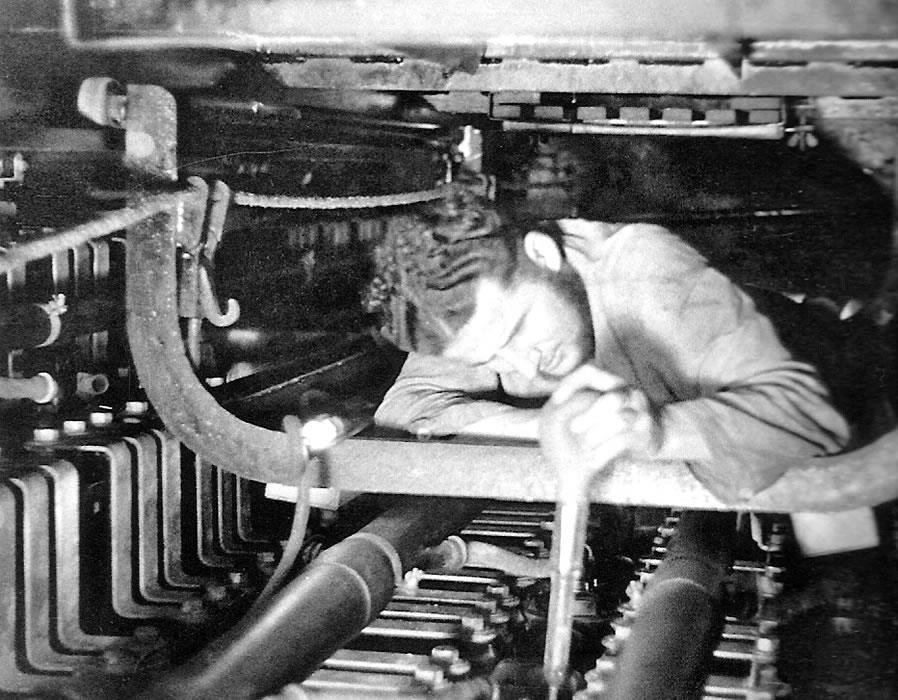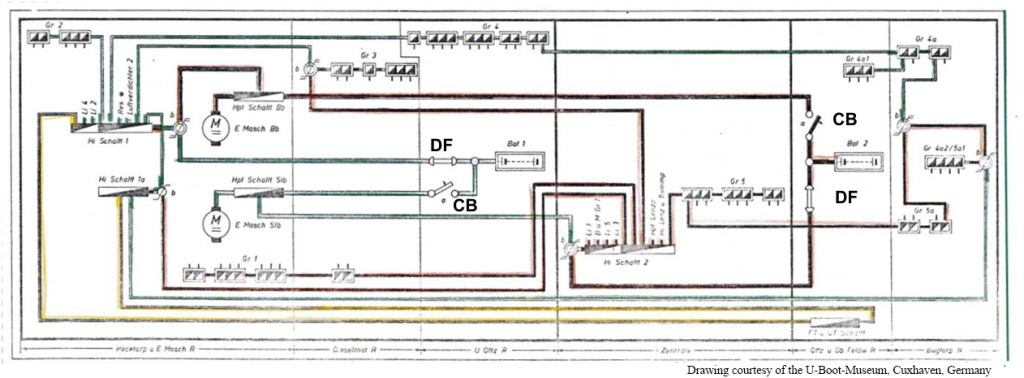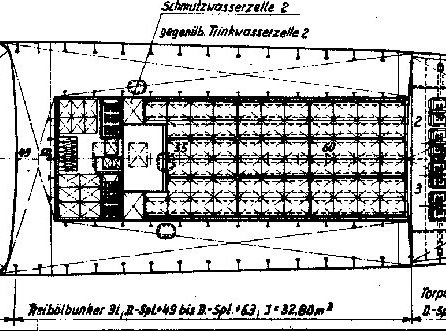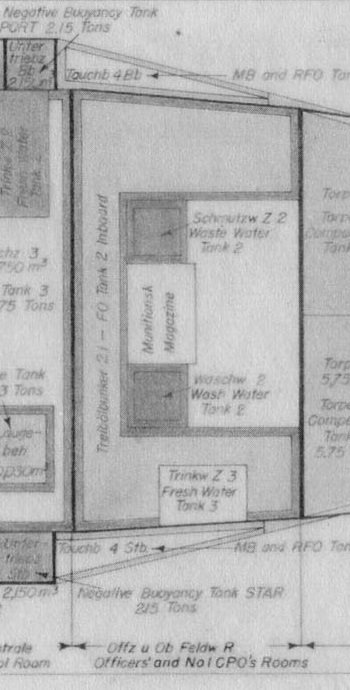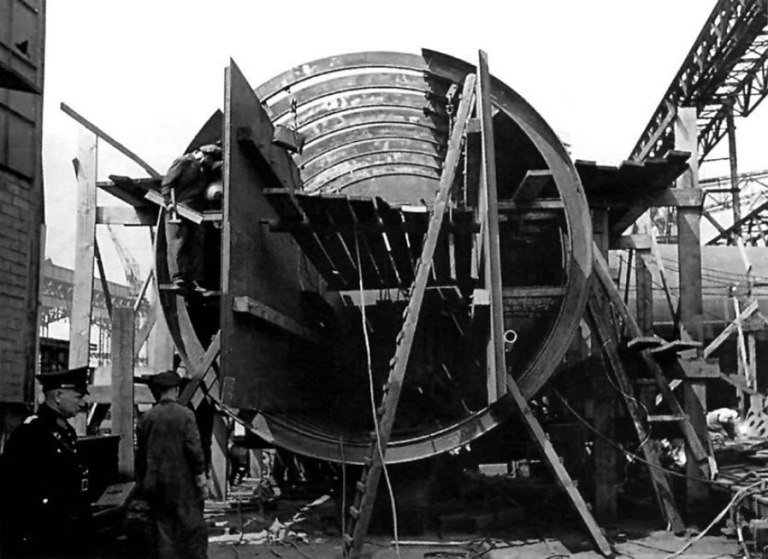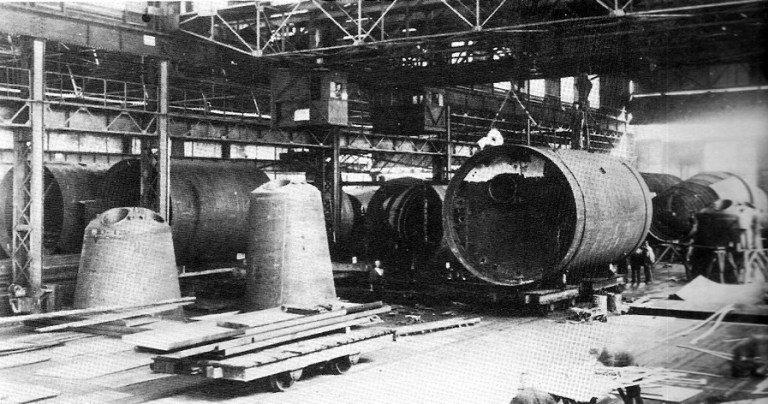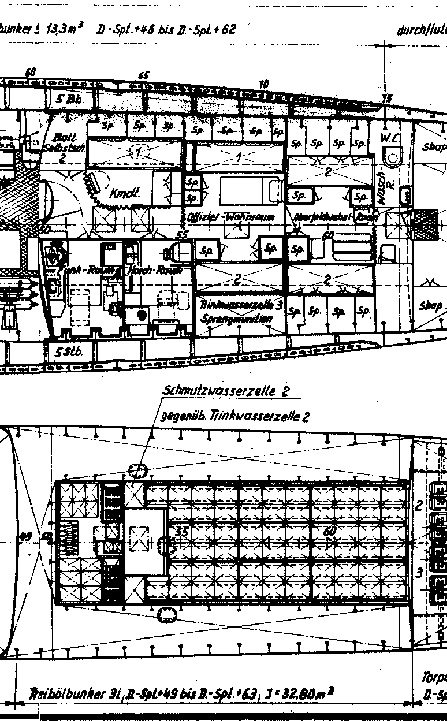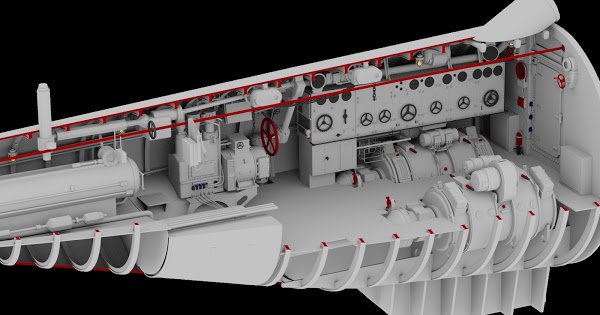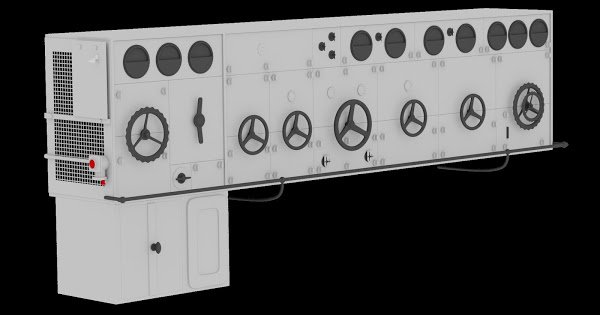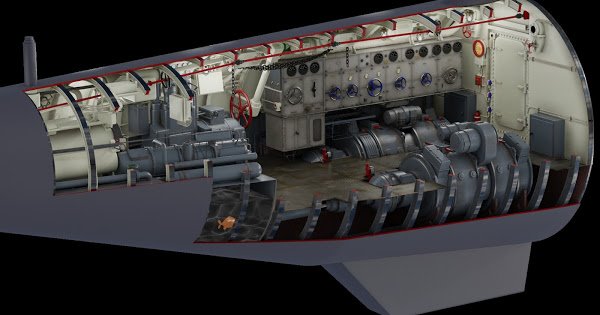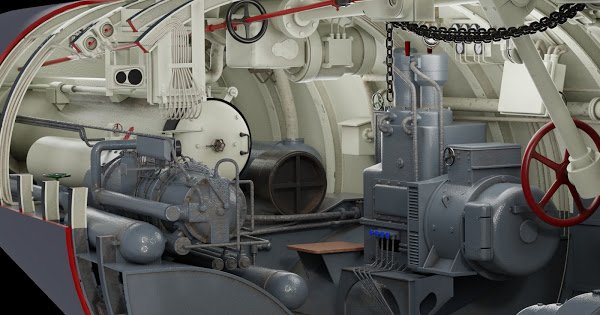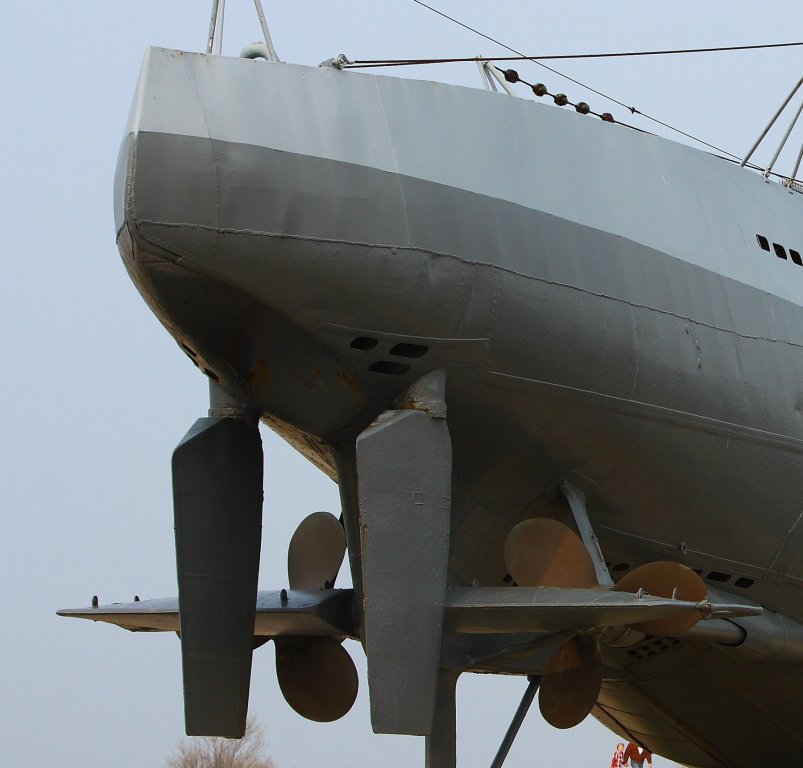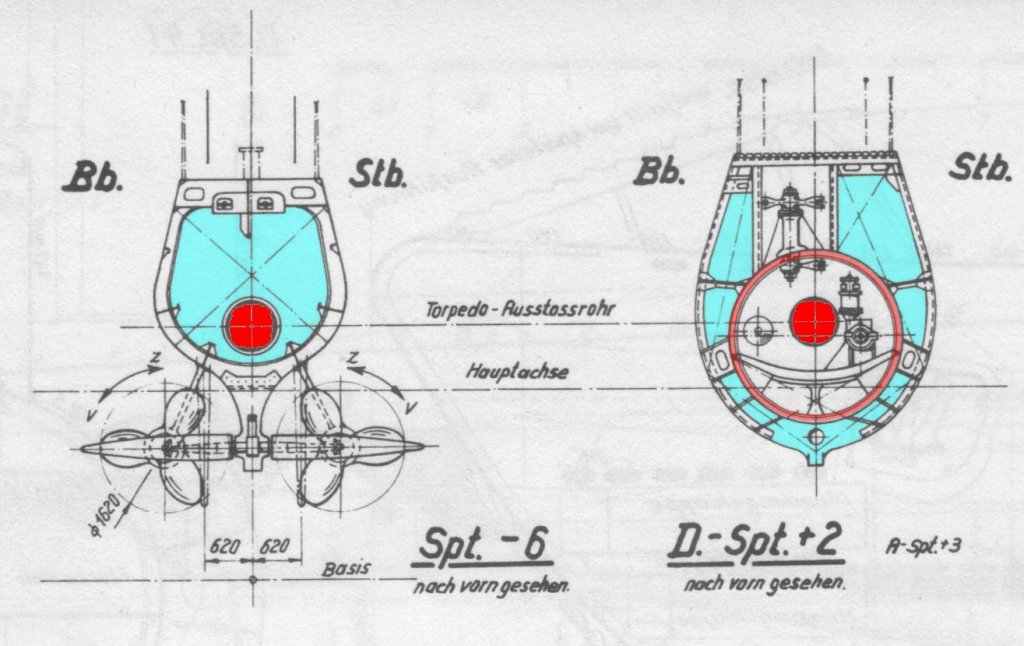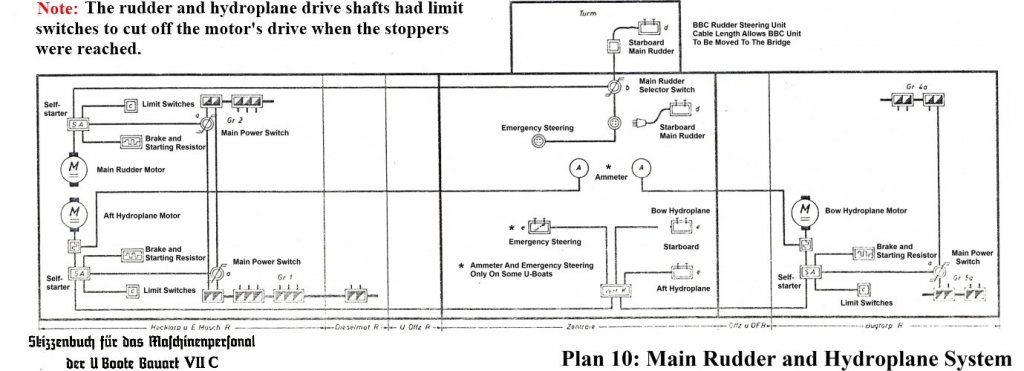-
Posts
3,563 -
Joined
-
Last visited
Content Type
Profiles
Forums
Gallery
Events
Everything posted by yvesvidal
-
The insanity continues. I have decided to show some fuel (Diesel) in the tanks: This is done with Automotive Clearcoat (not pulverized/sprayed) and therefore a lot less toxic. Diesel fuel being transparent, epoxy resin did not fit too well (at least I do not have a clear resin at hand). We will see how it goes and if it finally dries as there is a thick coat in that tank. Next is the support for the canon, on the deck: Please someone calls the "White Coats"...... Yves
-
I have been doing more reading and studying the plans of the Type VIIc and there is no way I can accept the crude implementation of "the Trumpeter" for my model. So, we are going to do some delicate surgery to open the bulkhead and represent the Fuel tanks in the correct way: Basically a "U" shaped tank located under and around the batteries and slightly under the control room. Below is the bulkhead between the Battery #2 compartment and the Control room (in the process of being cut): After cleaning the opening: Similarly the battery compartment is opened to match the contours of the fuel tanks on each side: and... I still have to cut the openings for the saddle tanks. More details will follow. I need to fabricate a round shape to implement the end of the fuel tank. There is a big mistake (not the first, and not the last) in the Trumpeter kit and it has to do with the floor of the control room. The kit provides a flat control room floor, where in fact the main platform was concave with just a flat plate in the middle. It is just impossible (at least for me) to modify the kit and that would prevent the observer to look into the control room and appreciate all the details of that very complex room. So, it will remain flat..... Yves
-
Jack, That boat is a statement of your incredible skills. Very impressive. Yves
- 190 replies
-
- ragusian
- marisstella
-
(and 1 more)
Tagged with:
-
Should you not have a hole under the latrines, or are they using buckets? Yves
- 315 replies
-
- master korabel
- avos
-
(and 1 more)
Tagged with:
-
I love that distressed wood. So well done. Yves
- 345 replies
-
- graf zeppelin
- trumpeter
-
(and 2 more)
Tagged with:
-
Another small piece of details, in that compartment: the ammunition magazine ! The kit is very crude of course and I added another stack of ammunition boxes and a ladder to go inside the magazine: Not much will be visible once the floor is in place, but the satisfaction to know it is there is enough to justify a couple of minutes spent on that small room. Access was through the floor and some removable plate. Same for the battery room access done through another plate, in the floor. Apparently, the ammunition magazine could be flooded to prevent explosions in case of fire on board (I still have to find definitive explanations about that one - It would have been a controlled flooding (spray like) and the water would be removed via the bilge pumps). Yves
-
Thank you Guys. It is fun to improve on this kit. Lots of possibilities if you do a little bit of research on the Type VIIc. I wish there was a PE set for batteries connections. That would have been insane.... I am trying to replicate some more details on the bottom section of that module. More to come.... Yves
-
Gorgeous work on the railing and nets. Yves
- 345 replies
-
- graf zeppelin
- trumpeter
-
(and 2 more)
Tagged with:
-
Beautiful Jack, very impressive. So neat and clean. Yves
- 190 replies
-
- ragusian
- marisstella
-
(and 1 more)
Tagged with:
-
Small progress on the battery compartment with a spin.... The batteries on the Type VIIc were connected in series/parallel to obtain up to 110 Volts DC: Below is a schematic of the Batteries wiring. In this module, we are talking about Battery #2 (Battery #1 is located towards the stern of the boat). The switches are in the large electric frames sitting above the electric motors (see previous module for details). Depending of the type of accumulators, there could be 5 or 6 parallel connections between the cells, as shown in the following pictures: The cells provided by Trumpeter are slightly over sized and as such we can only represent 4 rows instead of 6 that were available on the prototype (the fourth row has been omitted to allow a peek into the compartment. Note that a detailed PE set could have been made to represent the connections bars between the cells. That would have been quite impressive.... to build and to display. These cells required a lot of maintenance (we are in 1939-40) and did not perform as well and as reliably as modern car batteries. A sliding platform was designed to allow a brave sailor to glide over the cells and keep them in good shape, by checking their electrolytes and cleaning any sulfate deposits on the connections: Let's keep in mind that the voltages could reach 110V DC with a total current capacity of 10,000 Amps. Touching the electrodes and connections was fatal in most cases as DC current burns irremediably. On my module, I tried to represent this interesting (although painful and tedious) aspect of the life aboard: The fellow uses the rope on his right side to move along the banks of cells. As you can see from the Trumpeter assembly plan, this is a little bit more involved and prototypical. It is always fun to try to improve on an existing kit. Yves
-
As previously mentioned, I am now working on the Officers Quarters, starting with the Battery compartment, underneath. The Trumpeter approach is somewhat simplistic, once again: The amounts of batteries does not match what was installed in the original boat. As you may recall, this section includes batteries but also ammunition, waste water tanks and fresh water tanks. Here is a cutout drawing of the compartment, looking towards the bow: - To the left is a fuel tank, included inside the pressure hull. - In the middle, the ammunition magazine and the waste/fresh water tanks. - To the right, another fuel tank, slightly smaller but still located inside the pressure hull. The Port tank is bigger because they used the space under the officers' beds to increase its size. On the starboard side, there was the radio and sonar rooms. You will notice that the bulkheads are also cut to represent the outside saddle tank ballasts. Of course, the Trumpeter kit totally ignores this aspect, even though it is clearly visible from the outside. So, we have to open some cuts, at least on the starboard: Matching cuts will have to be done on the other bulkhead, in the control room (left on the picture). I have decided to improve on the Trumpeter implementation and make that compartment a little bit more interesting and descriptive. Therefore, we are starting from this: And adding the representation of the fuel tanks, on both sides. To allow a peek into the battery room and ammunition magazine, it is necessary to "wave" the starboard tank wall: It is starting to come together: and with the waste tanks and fresh water tank as well as the magazine: I started designing and cutting some parts to close some of the pressure hull and represent the Fuel tank: But I realized that I had some spare parts and decided instead to use the ceiling of that same compartment to represent my external pressure hull section. After cutting it to size, this is what we have: It is a lot more prototypical than whatever I could have done and come with the internal ribs of the pressure hull. Once painted, the result is not too bad: All the batteries (3 rows) in this compartment have been painted. I will need to dry brush them to represent some connections and the sulfate on the connections. The fourth row of batteries will not be represented for the reason that you will see later....(surprise). Note that I have exhausted almost all the batteries included in the kit. It is a good thing, I have another set for the rear compartment. Yves
-
While waiting for the Humbrol cans to come from Europe, I have decided to start looking into the second module located right after the front torpedoes room. That module comprises Petty Officers bunks/Beds, Captain Quarters, Tables for eating, Water Closet, Radio room and Listening Room for the Sonar system. It also included Batteries, ammunition supplies and various tanks: It is a very packed module with the typical Trumpeter shortcuts and simplifications. Here again, the second set of parts will be most welcome to populate a compartment which is somewhat empty as designed in the kit. One major problem with the kit is the flat bulkhead between that compartment and the Command/control room. It would take a concave part to remedy that issue, which is not possible in our case. The upper/central level will be detailed later on. First, I will focus on the lower level of that compartment: Tanks, batteries, Magazine. The following picture summarizes what can be found in that section: Battery banks #2, the waste water tank #2, the ammunition magazine (for the main gun on the deck and machine gun on the conning tower) and the Fuel Oil inboard tank #2, located inside the pressure hull. We also have a fresh water tank #3. The following are excerpts from "The Manual": Ammunition. Total amount of ammunition that can be carried: 8.8 cm munitions: 205 rounds HE shell C/35 MG C/30 munitions: 1500 rounds Of these in munitions magazine in officers room between Frames 50 ½ – 53: 177 rounds 8,8 cm HE shell C/35 1200 rounds MG C/30 Ready-use ammunition for the S.K. C/35 is stored in pressure-proof canisters [one shell to a canister placed in a rack] in the upper deck just aft of and outside the operating circle to both sides of the conning tower: 28 rounds 8.8 cm HE shell C/35 3 ammo clips with 20 rounds each are stored in the conning tower. The munitions magazine in officers room is connected to the flooding and drainage installation. Battery. The auxiliary and main power supply of the boat consists of two separately arranged storage batteries. Battery 1 is located under the petty officers room and battery 2 is under the officers room. a) Technical and performance data. Type: 33 MAL 800 W Cells: 2 x 62 Number of negative plates: 34 Number of positive plates: 33 Cell weight: 493 kg +/- 2% Total weight of batteries: 61132 kg +/- 2% Capacity at 20 hour rate 9160 Amp hours b) Construction and maintenance. The cells of every battery are set up in 6 rows on step-shaped iron stands. Over the cells, there is an extractor duct that moves gases into the main exhaust trunk. Each cell is connected to the duct by a rubber tube. The U-tube manometer located outside of the battery room indicates the amount of suction in the extractor duct. Between the single plates of each cell are insulators. The negative plates are equipped with hard rubber feet and stand on the box bottom, while the positive plates hang in the box itself. Plates of the same polarity are grouped together, both groups form a package. This is covered with a glass plate for protection against foreign objects. The plates of each group are connected by terminal strips. Each strip has 5 terminals, which are passed through the box cover. Cell connectors (leaded copper rails) are screwed onto the terminals; the lid of the cells is double-walled and has 3 openings: Extraction opening Air entrance opening Operation opening The air entrance opening is designed in such a way that during a boat’s inclination up to 35° in any direction no acid is spilled from the cell. The cell case is made of hard rubber and so strongly constructed that the ready-for-operation cell is easily transported using eyelets. The joint between the box and the lid is filled with a sealing compound. The sealing compound can be melted by means of a wire inserted into the groove of the joint by connecting the wire ends to the terminals of the cell. Each cell has a rating plate with data regarding type, manufacturer's number, manufacture date of the positive and negative plates and details regarding repairs and maintenance of the battery. Operating life of the battery depends on careful maintenance. Maintenance includes cleaning of the upper surface of the cells. Foreign bodies or contamination should not drop into the cells through the operation openings. Particularly dangerous is sea water containing chlorine, which destroys the positive plates. An external inspection of the battery must be carried out frequently. All suction pipes are to be regularly inspected to ensure they are working properly. A defective ventilation system may cause a battery explosion. An examination of all cells must be performed every 4 weeks in conjunction with recharging. This includes compensation of acid levels by adding distilled water, the measurement of the acid density, temperature and the voltage of the individual cells. So that stands, and the pressure hull are not corroded by acid which spills into the battery rooms, the bilge water is to be examined frequently. Both battery rooms can be rinsed with slaked lime and are connected to the draining system. c) Capacity, discharging, final voltage. The capacity of a battery is mainly dependent on the discharging current and the cell temperature. The following capacity values are at a reference temperature of 30° C. Type 33 MAL 800 W Discharge current Duration Amp Hours Final Voltage in V Amps Hours Ah Cell 1/2 Battery 3630 1-1/2 5450 1.63 101.06 2960 2 5920 1.67 103.50 2200 3 6600 1.71 106.02 1480 5 7400 1.75 108.50 838 10 8380 1.78 110.36 458 20 9160 1.80 111.60 196 50 9800 1.80 111.60 The information listed in the preceding table about the capacity refers to discharging with a certain current, without interruption up to the final voltage. However, if discharge is stopped before battery exhaustion and is continued again later, the total capacity is greater. The battery has the ability to recover in the rest state. d) Charging. The Type 33 MAL 800 W charge begins with 1650 A (1st, charging phase) which is reduced gradually to 415 A (3rd, charging phase). Charging with low current is allowed. Cell temperature should not exceed 45° C. In special cases "fast charging” is done by doubling the 1st, charging phase, the charging time is shortened by about 1/3. 2) Wash water installation. Wash water is stored in the following tanks: 1 wash water tank (listening room) 1 wash water daily supply tank (aft W.C.) Wash water tank and wash water daily supply tank are connected to the fresh water filling and extracting line. Tanks are filled through the intake at the upper deck. The hand fresh water pump is used for filling the wash water daily supply tank from the wash water tank. A hand wash water pump provided in the forward W.C., to which a suction line can be switched by the selector cock to the wash water tank or to torpedo compensating tank 2. Extracting the wash water from torpedo compensating tank 1 takes place by means of compressed air. 3) Fresh water installation. Fresh water is stored in 3 tanks (3.870 m³) situated in: Fresh water tank 1: Galley, port, under the floor Fresh water tank 2: Control room, port Fresh water tank 3: Officers room, stb. The fresh water tanks are connected to the filling and extracting line through the fresh water selector cock. The line leads through the hull valve at the upper deck and inside the hull branches off to the emergency drain connection. The hand fresh water pump in the galley takes suction from selected tank and discharges through the control valve either directly to the tap in wash sink or through the filter. The water supplied by the distilling unit in the control room is collected in the distillate tank and is moved through the control valve either directly or through the filter to fresh water tank 1 in the galley. All fresh and wash water tanks have sounding pipes and dip sticks. Finally, a picture showing the internal partitions used to build the Fuel Oil tank from the Battery compartment: And a picture of the compartment under study (tube to the right): Yves
-
I am not too happy with the oil canning done with my airbrush. I suppose I do not have a small enough nozzle to draw very thin lines. It is probably okay with the lower section of the hull, since the color is very close to black/dark blue but for the upper section, something must be done: As you can see, it is not regular enough and I am concerned that it may show up in an unpleasant way, through the light gray. So, another light coat of primer to hide the mistakes: and of course, on the other side too: Using a brush and my hands, I have more precision: I think it may look a little bit better. Maybe not... I am experimenting and not sure where to go or what to do. Yves
-
Alright, the tedious and risky business of grinding the clear half-hull is over! Phew... It takes about one hour to open one cutout, grinding slowly, gently, at low speed to not melt the material. It is still very brittle so utmost care must be used. I hope these openings will be enough to see the interior compartments. It should work. A few PE parts have been glued and the hull is ready for the primer: That is a major milestone in the construction of that large model: I like that approach so much more than the clear (and also very opaque) hull provided by Trumpeter. I understand why they did it, as it is an enormous amount of work to cut these openings. With the Trumpeter solution, you put together the modules, glue then in the main hull and slap the clear hull on top....et voila. You are done. Not for me.... And the magnets used to put together the two halves are a life saver. The original plastic pins are long gone......as you can guess. A few view for the claustrophobia lovers: Et voila, the enchilada is ready for the painting. For the paint, I have ordered some acrylic Humbrol paints from Europe. Apparently, they have the colors that get the closest to the German colors of early Type VIIc submersible. We shall see! I think I am going to take a break of a few hours.... It is well deserved. Yves
-
Great job Cri-Cri. It is coming along nicely. Yves
- 550 replies
-
- confederacy
- model shipways
-
(and 1 more)
Tagged with:
-
Yes, I think the artist used that little fish to indicate that it is a ballast tank....unless it is his signature. Thank you for the kind words. It helps to tackle such long and arduous project. Yves
-
Since I may be in a position to apply some paint in the coming weeks, it is important to prepare the other/transparent side of the hull: This is the cutout for the Diesel Engine room. I applied a coat of primer to better see any mistakes or imperfections. Once all the cutouts are done, I may do the oil canning masking, put the hull together and try to paint the whole enchilada. Yves
-
The Type VIIc submersible has always been an icon, especially for European modelers. Revell and numerous plastic kits manufacturers have been offering that model for decades and every new release is met with a renewed passion and interest. The same goes with 3D rendering and computer modelling of that submarine. I wanted to show you what incredible work was done by some passionate people to render the rear torpedoes compartment. Just looking at it, you can realize what Trumpeter could have done with their kit, by pushing a little bit further the limits of today's technology: Spectacular work, to say the least. Yves
-
Coming back on the rudders and diving planes technology used by the German in their Type VIIc submersibles, and the stern in general: The picture above shows the famous U-995 sitting in Odela, Germany. Although this machine has been extensively modified throughout its career, it gives us a very good idea of what Type VIIc were during the war. Above the propeller shafts, you can see a ring attached to the hull: this ring was used to tie some ropes and allow maintenance crew to inspect and clean the propellers under water, in case of fouling or being tangled in nets or cables.. It was also used in Drydocks to help the repair folks. I should add that little detail to my model. Similar rings are also available on the diving planes. On the U-9995, the rear torpedo tube has been sealed. This is open to the public and they did not want kids to crawl inside the tube and fall outside. Therefore, the entire rear section has been welded with a steel plate, between the rudders. This drawing shows some cutouts of the stern and gives some dimensions about the propellers and rudders. You can see that the propellers are not directly blowing the rudders but they do it for the diving planes. Obviously the stern was not wide enough to allow the rudders to be in line with the shafts. The flow of water pushed against the stern is most likely very sufficient to provide some nice steering actions. On the second cutout, the storage area under floor calls for two torpedoes. The Trumpeter kit has only room for one, between the electric motors. The pressure hull in red is also visible with the steering mechanism on top. The last drawing gives you the electric/logic schematics of the rudders and diving planes (stern and bow) and how they were controlled from the command section, in the middle of the submersible. It is always good to know more about the technical details of the models we are building, don't you think? Yves
About us
Modelshipworld - Advancing Ship Modeling through Research
SSL Secured
Your security is important for us so this Website is SSL-Secured
NRG Mailing Address
Nautical Research Guild
237 South Lincoln Street
Westmont IL, 60559-1917
Model Ship World ® and the MSW logo are Registered Trademarks, and belong to the Nautical Research Guild (United States Patent and Trademark Office: No. 6,929,264 & No. 6,929,274, registered Dec. 20, 2022)
Helpful Links
About the NRG
If you enjoy building ship models that are historically accurate as well as beautiful, then The Nautical Research Guild (NRG) is just right for you.
The Guild is a non-profit educational organization whose mission is to “Advance Ship Modeling Through Research”. We provide support to our members in their efforts to raise the quality of their model ships.
The Nautical Research Guild has published our world-renowned quarterly magazine, The Nautical Research Journal, since 1955. The pages of the Journal are full of articles by accomplished ship modelers who show you how they create those exquisite details on their models, and by maritime historians who show you the correct details to build. The Journal is available in both print and digital editions. Go to the NRG web site (www.thenrg.org) to download a complimentary digital copy of the Journal. The NRG also publishes plan sets, books and compilations of back issues of the Journal and the former Ships in Scale and Model Ship Builder magazines.




